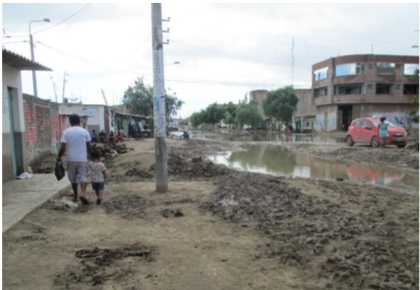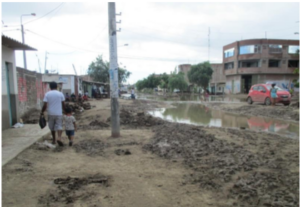Peru Flooding Concerns: Potable Water, Sanitation, Housing
Flooding in Peru has caused landslides and flooding across 24 of the nation’s 25 regions. In the past few days, more than 80 people have died and at least 100,000 have been injured as a result of the floods. At least 650,000 have been affected, with more than 145,000 properties damaged. States of emergency have […]


Flooding in Peru has caused landslides and flooding across 24 of the nation’s 25 regions. In the past few days, more than 80 people have died and at least 100,000 have been injured as a result of the floods. At least 650,000 have been affected, with more than 145,000 properties damaged. States of emergency have been declared in 12 regions due to flooding, and seven regions have also declared a state of emergency due to sanitation.
Key concerns include access to potable water (the drainage system in Chiclayo and Piura collapsed and even large cities such as Lima have limited water supplies); sanitation (vector-borne diseases, especially Zika could skyrocket); and housing (more than 25,000 have collapsed or are uninhabitable).
Many of our non-governmental organization partners have a long-standing presence in Peru and are working with the country’s government, as well as the United Nations Disaster Assessment Coordination teams and the UN Office for the Coordination of Humanitarian Affairs and other UN agencies to assess the damage and begin determining steps forward in response and recovery.
Here’s what we have heard from a few of them:
- Direct Relief has sent an initial emergency shipment of 12,500 pounds of requested medicines and medical supplies to community hospitals in affected areas. Working with its local partners, the Ministry of Health and the Peruvian Air Force, Direct Relief supplies will reach areas cut off from ground transportation in coastal communities, primarily Piura.
- Lutheran World Relief is coordinating with the ACT Alliance and CEDEPAS Norte to help those affected by the flooding and landslides. LWR is procuring and distributing tents, inflatable mattresses, and mosquito nets, as well as conducting trainings on sanitation and hygiene and offering food assistance.

- Save the Children has worked in Peru for decades. Its’ staff is already working to provide safe spaces for children, WASH initiatives, and aid such as clothing, food, cookware for mothers with children, and school support in flood affected areas.
We assume this is the tip of the iceberg in terms of NGO response. If you’re working in Peru and responding to the floods, please send me your updates at at anna.hurt@disasterphilanthropy.org.